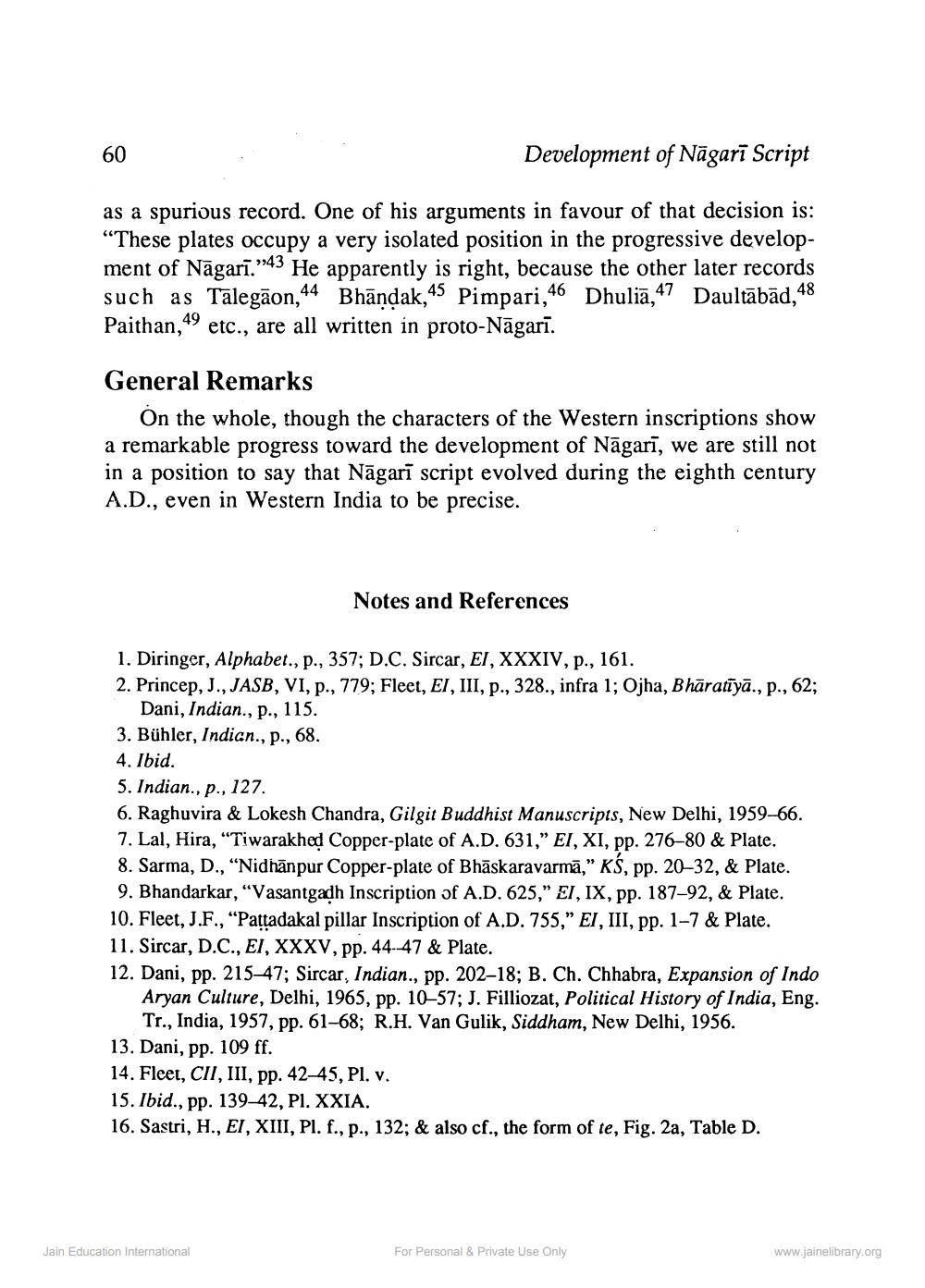________________
60
Development of Nāgarī Script
as a spurious record. One of his arguments in favour of that decision is: “These plates occupy a very isolated position in the progressive development of Nāgarī.»:43 He apparently is right, because the other later records such as Tālegãon,44 Bhāndak,45 Pimpari,46 Dhuliā,47 Daultābād, 48 Paithan,49 etc., are all written in proto-Nāgarī.
General Remarks
On the whole, though the characters of the Western inscriptions show a remarkable progress toward the development of Nāgarī, we are still not in a position to say that Nāgarī script evolved during the eighth century A.D., even in Western India to be precise.
Notes and References
1. Diringer, Alphabet., p., 357; D.C. Sircar, EI, XXXIV, P., 161. 2. Princep, J., JASB, VI, p., 779; Fleet, EI, III, p., 328., infra 1; Ojha, Bhāratīyā., p., 62;
Dani, Indian., p., 115. 3. Bühler, Indian., p., 68. 4. Ibid. 5. Indian., p., 127. 6. Raghuvira & Lokesh Chandra, Gilgit Buddhist Manuscripts, New Delhi, 1959–66. 7. Lal, Hira, "Tiwarakhed Copper-plate of A.D. 631," EI, XI, pp. 276-80 & Plate. 8. Sarma, D., “Nidhānpur Copper-plate of Bhāskaravarmā," Kś, pp. 20–32, & Plate. 9. Bhandarkar, “Vasantgadh Inscription of A.D. 625," EI, IX, pp. 187-92, & Plate. 10. Fleet, J.F., “Pattadakal pillar Inscription of A.D. 755," EI, III, pp. 1-7 & Plate. 11. Sircar, D.C., EI, XXXV, pp. 44-47 & Plate. 12. Dani, pp. 215-47; Sircar, Indian., pp. 202-18; B. Ch. Chhabra, Expansion of Indo
Aryan Culture, Delhi, 1965, pp. 10–57; J. Filliozat, Political History of India, Eng.
Tr., India, 1957, pp. 61-68; R.H. Van Gulik, Siddham, New Delhi, 1956. 13. Dani, pp. 109 ff. 14. Fleet, CII, III, pp. 42-45, Pl. v. 15. Ibid., pp. 139–42, Pl. XXIA. 16. Sastri, H., EI, XIII, PI. f., p., 132; & also cf., the form of te, Fig. 2a, Table D.
Jain Education International
For Personal & Private Use Only
www.jainelibrary.org




